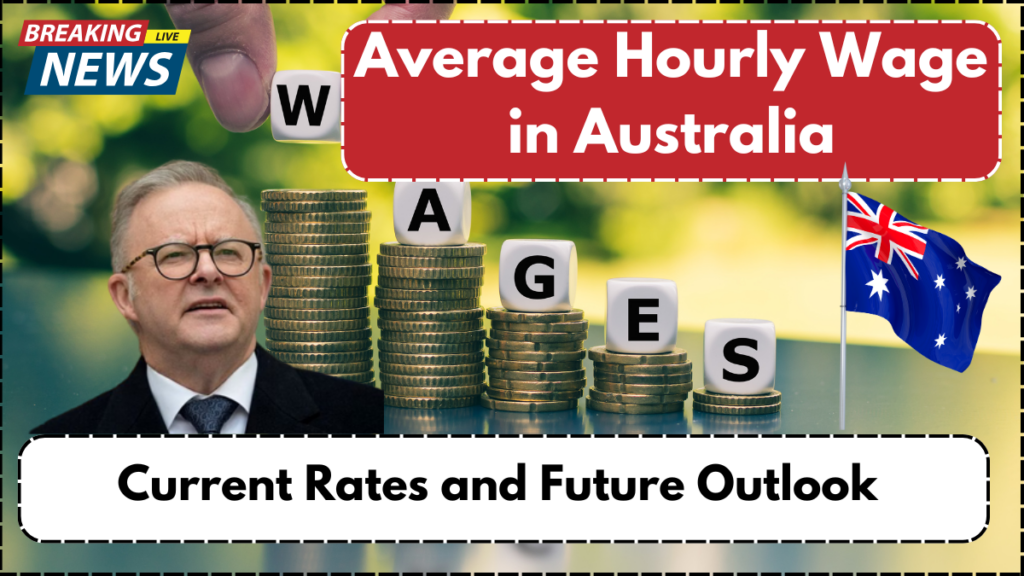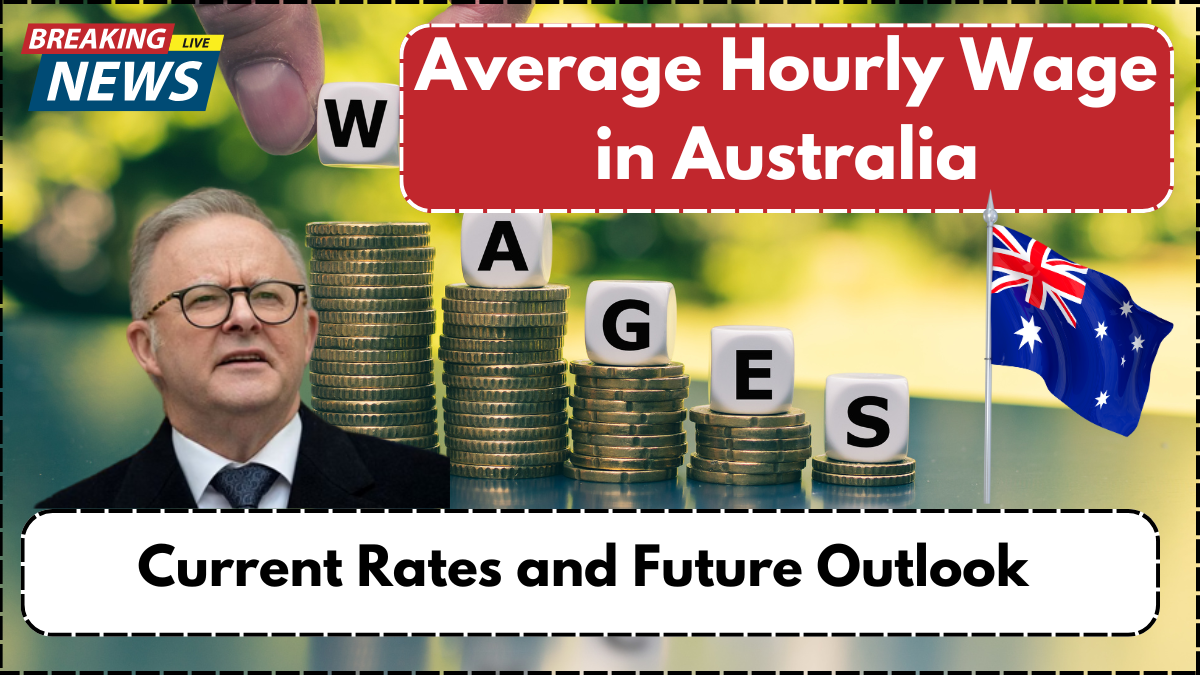If you’re working in Australia or planning to enter the job market soon, understanding wage trends is essential. In 2025, the average hourly wage in Australia reflects the nation’s ongoing economic adjustments, cost of living changes, and labor market dynamics. This updated guide breaks down the current rates, factors influencing wage levels, and future expectations.

Current Average Hourly Wage in Australia (April 2025)
As of April 2025, the average hourly wage in Australia is $40.00, marking a $0.30 increase from March 2025. The median weekly wage has risen to $1,396, up $96 since August 2024. Full-time employees earn an average of $1,700 per week, while part-time workers typically earn $691 weekly.
This wage data points to a continued upward trend, albeit modest. Wage figures differ based on various factors such as job type, industry, experience, and region. Below is a snapshot of key statistics:
| Metric | Amount (AUD) | Time Frame |
|---|---|---|
| Average Hourly Wage | $40.00 | April 2025 |
| Median Weekly Wage | $1,396 | April 2025 |
| Full-Time Weekly Earnings | $1,700 | April 2025 |
| Part-Time Weekly Earnings | $691 | April 2025 |
| Average Annual Entry-Level | $69,801 | 2025 |
| Experienced Annual Salary | $138,419 | 2025 |
What Influences Wage Levels in Australia?
The average wage is not uniform across all sectors or positions. It fluctuates depending on several elements:
- Industry: Sectors like mining, healthcare, and technology often offer higher pay due to demand and skill requirements.
- Job Role: Managerial and specialized technical roles typically command higher wages than administrative or support roles.
- Location: Urban centers such as Sydney and Melbourne tend to have higher wages, reflecting higher living costs.
- Experience and Qualifications: More experienced workers and those with advanced qualifications tend to earn significantly more.
- Economic and Government Policies: Changes in tax brackets, inflation, and the national minimum wage impact the broader wage environment.
Wage Growth Trends and Outlook for 2025
The Wage Price Index (WPI), released by the Australian Bureau of Statistics (ABS), is a reliable indicator of national wage growth. Despite global economic uncertainties, Australia has seen relatively consistent growth in wages since late 2022.
- In the June quarter of 2025, wages grew by 4.1% year-on-year.
- This growth slowed slightly to 3.5% in the September quarter.
- Annual wage growth has consistently remained above 3.0% since 2022, surpassing the long-term average of 2.4%.
This trajectory suggests that wages are likely to continue increasing in 2025, although the rate may moderate depending on inflation control, interest rates, and global economic pressures.
Factors Driving Wage Increases
Several mechanisms are in place to ensure fair wage adjustments:
- Annual Wage Reviews: Conducted by the Fair Work Commission to reassess minimum wage levels.
- Industrial Awards: These set out pay rates for specific sectors and demographics, including youth, apprentices, and casual workers.
- Union Negotiations: Collective bargaining agreements often secure better wages and conditions for employees.
Conclusion
Australia’s wage landscape in 2025 reflects a healthy, though slightly cautious, growth environment. With the average hourly wage now at $40, workers are seeing gradual improvements that aim to keep pace with the rising cost of living. Whether you’re a new entrant into the workforce or a seasoned professional, staying informed about wage trends helps you make better career and financial decisions.
FAQs About Australia’s Average Hourly Wage
What is the average hourly wage in Australia in 2025?
As of April 2025, it is $40.00 per hour.
Has the average wage increased recently?
Yes, it increased by $0.30 from March to April 2025.
What is the difference between average and median wage?
The average is the total sum divided by the number of workers, while the median is the middle value separating the higher half from the lower half.
Are full-time and part-time wages different?
Yes. Full-time workers earn around $1,700 weekly, while part-time employees earn about $691.
What influences wage growth in Australia?
Factors include industry demand, experience, education, economic policies, and regional cost of living.
How often are wages reviewed?
Wages are reviewed annually by the Fair Work Commission and periodically adjusted by enterprise agreements or awards.
Are wages expected to keep rising in 2025?
Yes, though growth may moderate, wages are expected to continue rising in response to inflation and market dynamics.
What is the entry-level salary in 2025?
The average annual salary for entry-level positions is approximately $69,801.
How much do experienced professionals make?
Experienced workers can earn up to $138,419 per year.
Is wage growth keeping up with inflation?
It is improving, with annual growth above 3%, but regional and sector differences may affect individual experiences.
For More Information Click Here
Pari is a passionate writer known for captivating stories that blend imagination and reality. Inspired by travel, history, and everyday moments, Pari crafts narratives that resonate deeply with readers.




